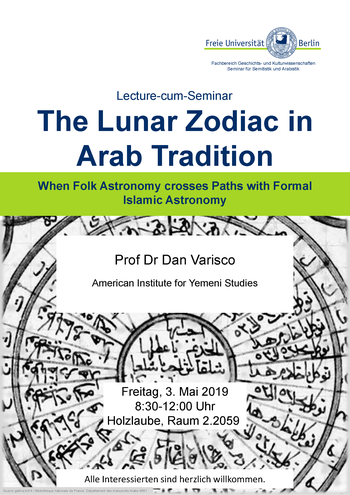Lecture-cum-Seminar "The Lunar Zodiac in Arab Tradition" (Dan Varisco)
When Folk Astronomy crosses Paths with Formal Islamic Astronomy
One of the formal time-reckoning systems in Arab Islamic astronomy is the use of 28 asterisms, known as lunar stations or mansions (manāzil al-qamar) near the ecliptic in which the moon stations each night of its orbit or sidereal month. These same asterisms can be plotted out against the annual cycle of the earth’s revolution around the sun and are generally called the anwā’. The formal system was borrowed from India via Sassanian Iran at the start of the Islamic era and merged with local Arabian star calendars that included several of the same stars. This talk will look at the textual evidence for the introduction and adaptation of this reckoning system and its eventual role in both time-keeping and astrological prognostication. The astrological significance had an influence in Latin texts, such as the 13th-century Picatrix.


